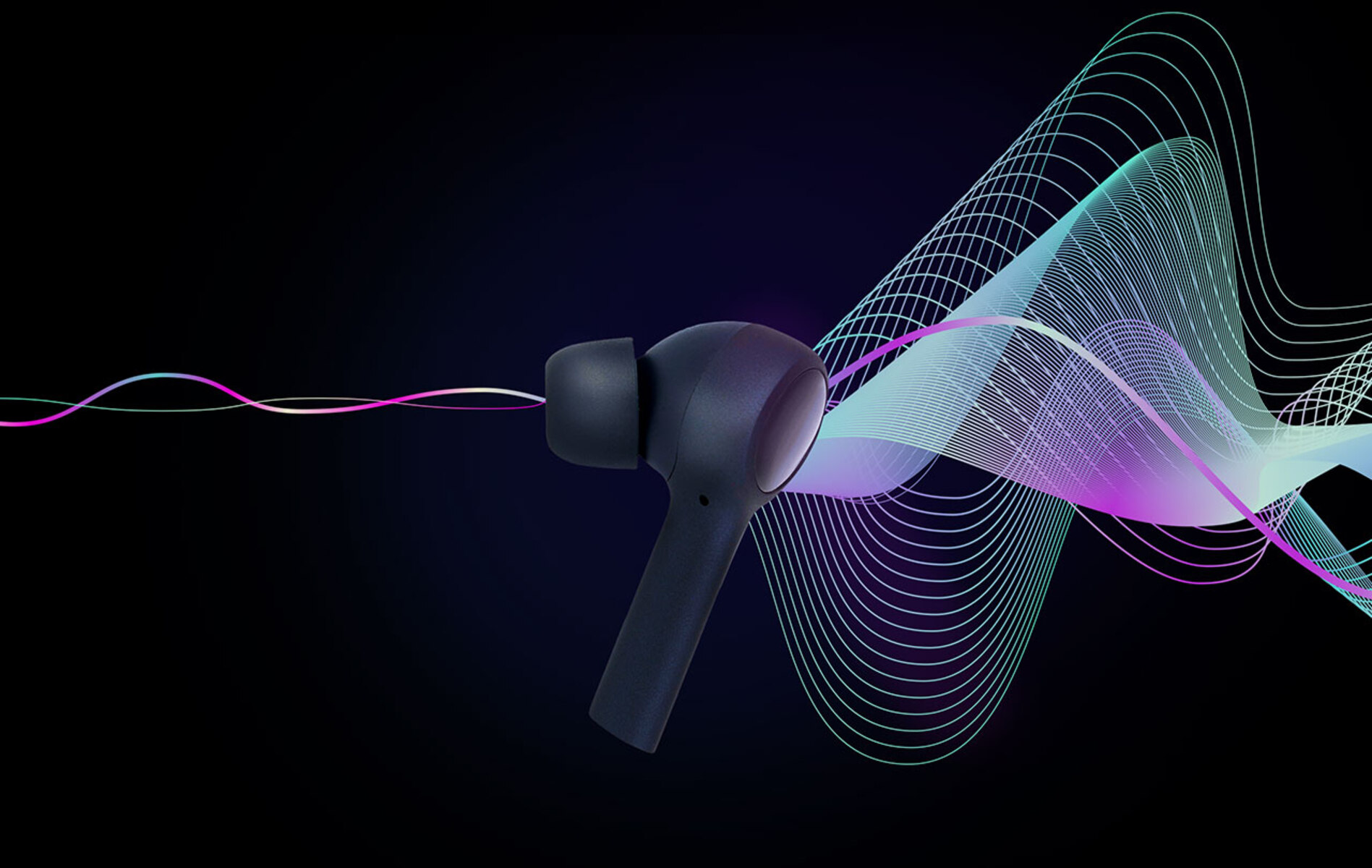Introduction
Noise pollution is a pervasive issue in our modern society, affecting our overall well-being and quality of life. Whether it’s the constant hum of traffic, the blaring sounds from construction sites, or the chatter in a crowded café, environmental noise can be both annoying and detrimental to our health. Thankfully, advancements in technology have led to the development of solutions to combat this problem, one of which is environmental noise cancellation.
Environmental noise cancellation is a cutting-edge technology that aims to reduce or eliminate unwanted sounds in our surroundings. By employing innovative algorithms and acoustic sensors, this technology can detect and mitigate various types of noise, creating a more serene and peaceful environment. From bustling urban areas to noisy workspaces, environmental noise cancellation has applications in a wide range of settings, offering numerous benefits to individuals and communities.
In this article, we will explore the concept of environmental noise cancellation in greater detail. We will delve into how it works, the applications it has, and the benefits it provides. Additionally, we will consider the challenges and limitations associated with this technology. By understanding the potential of environmental noise cancellation, we can better appreciate its significance in tackling noise pollution and improving our daily lives.
So, let’s dive into the world of environmental noise cancellation and discover how it can transform the way we experience soundscapes.
Definition of Environmental Noise Cancellation
Environmental noise cancellation, also known as active noise control (ANC), is a technology designed to reduce or eliminate unwanted sounds from our surroundings. It involves the use of sophisticated algorithms and audio processing techniques to counteract or cancel out the noise, thereby creating a more tranquil environment for individuals.
The fundamental principle behind environmental noise cancellation is based on destructive interference, which occurs when two sound waves of opposite phases meet. By generating an “anti-noise” signal that is equal in amplitude but opposite in phase to the incoming noise, these two sound waves effectively cancel each other out. As a result, the unwanted noise is attenuated or completely eliminated.
To achieve effective noise cancellation, environmental noise cancellation systems typically consist of three main components: a sensor, a control unit, and an actuator. The sensor analyzes the ambient noise and provides real-time feedback to the control unit, which then generates the appropriate anti-noise signal. The actuator, such as a speaker or headphones, produces the anti-noise signal to counteract the incoming noise waves.
It is important to note that environmental noise cancellation is different from passive noise isolation. While passive techniques like soundproofing or wearing earmuffs can block out noise to some extent, they do not actively cancel it out in real-time. Environmental noise cancellation, on the other hand, actively suppresses the noise as it occurs, offering a more comprehensive and efficient solution.
Moreover, environmental noise cancellation is not limited to merely reducing external sounds. It can also be applied to cancel out unwanted noise generated from electronic devices, such as cooling fans, engines, or appliances. By implementing ANC in these devices, manufacturers can minimize the noise output and create a quieter and more enjoyable user experience.
Overall, environmental noise cancellation is a powerful technology that aims to mitigate the negative effects of noise pollution on our well-being and productivity. With its ability to provide real-time noise reduction and cancellation, it holds great promise for creating more peaceful and harmonious environments in various settings.
How Environmental Noise Cancellation Works
Environmental noise cancellation utilizes advanced algorithms and signal processing techniques to effectively reduce or eliminate unwanted sounds. The process involves several key steps that work together to create a quieter and more enjoyable environment:
1. Sensing the Noise: Environmental noise cancellation systems start by sensing the ambient noise using microphones or sensors strategically placed in the environment. These sensors capture the sound waves and convert them into electrical signals, which will be analyzed for further processing.
2. Signal Analysis and Processing: Once the noise is detected, the signals are analyzed in real-time to identify the frequency, amplitude, and phase characteristics of the noise. Advanced algorithms are employed to distinguish between the desired sounds and the unwanted noise. This analysis provides the necessary data to generate the anti-noise signal.
3. Creating the Anti-Noise Signal: Based on the analysis of the noise signal, the environmental noise cancellation system generates an anti-noise signal that is exactly opposite in phase and equal in amplitude to the detected noise. This anti-noise signal is carefully calculated to effectively cancel out the unwanted noise waves when combined with the original sound waves.
4. Combining the Anti-Noise and Original Sound: The anti-noise signal is mixed with the original sound waves, either by using headphones for individuals or by utilizing speakers in a listening environment. When the anti-noise signal combines with the noise, they interact and create destructive interference, resulting in the cancellation or reduction of the unwanted noise. The combined sound that reaches the listener’s ears is a quieter and more pleasing version of the original sound.
5. Adaptive Control: Environmental noise cancellation systems have the ability to continuously adapt to changes in the ambient noise. By constantly monitoring and analyzing the noise profile, the system can adjust the anti-noise signal in real-time to ensure effective cancellation. This adaptive control allows the system to maintain optimal noise cancellation performance, even in dynamic and unpredictable environments.
By following these steps, environmental noise cancellation systems are able to significantly reduce the impact of unwanted noise and create a more peaceful acoustic environment. Whether it’s in a crowded office, a noisy vehicle, or a bustling café, individuals can enjoy improved focus, concentration, and comfort with the help of this remarkable technology.
Applications of Environmental Noise Cancellation
Environmental noise cancellation has a wide range of applications across various industries and settings. Let’s explore some of the key areas where this technology is being utilized:
1. Transportation: Noise pollution is a significant issue in transportation, whether it’s in cars, airplanes, or trains. By implementing environmental noise cancellation, vehicles can provide a quieter and more pleasant experience for passengers. By reducing the noise from engines, road, and wind, ANC improves comfort, minimizes fatigue, and allows for clearer communication inside vehicles.
2. Workplaces: Many office environments are plagued with distracting noises, such as printers, HVAC systems, and conversations. Environmental noise cancellation systems can help create a more peaceful working environment, improving focus, productivity, and employee well-being. By reducing background noise, ANC allows employees to concentrate on their tasks and enhances overall job satisfaction.
3. Public Spaces: Parks, libraries, and public plazas are places where people seek relaxation and tranquility. However, these areas are often exposed to various sources of environmental noise. By implementing environmental noise cancellation technology, these public spaces can offer a more peaceful environment for individuals to enjoy and unwind.
4. Healthcare: In healthcare settings, noise pollution can be detrimental to patients’ recovery and well-being. Environmental noise cancellation systems can help reduce noise levels in hospitals, clinics, and patient rooms, creating a more healing and restful environment. Improved noise control can aid in better sleep quality, lower stress levels, and promote faster recovery times.
5. Entertainment: The entertainment industry can greatly benefit from environmental noise cancellation. From concert halls to home theaters, ANC can improve the audio experience by reducing unwanted background noise, providing clearer dialogue, and enhancing overall sound quality. This technology allows individuals to fully immerse themselves in the entertainment without distractions.
6. Call Centers: Call centers often face the challenge of background noise interfering with customer conversations. By implementing environmental noise cancellation technology, call center operators can improve call quality and reduce distractions, resulting in better customer service and increased customer satisfaction.
7. Construction Sites: Construction sites are notorious for the excessive noise they generate. Environmental noise cancellation can help mitigate this issue by reducing the impact of equipment noise, machinery, and construction activity. This not only benefits the workers by reducing their exposure to noise-related health risks but also minimizes the disruption caused to nearby residential areas.
These are just a few examples of the diverse applications of environmental noise cancellation. As the technology continues to advance, we can expect to see its implementation in even more areas, offering improved acoustic environments and enhancing the overall quality of our lives.
Benefits of Environmental Noise Cancellation
Environmental noise cancellation offers a wide array of benefits, enhancing our daily lives and improving our overall well-being. Here are some key advantages of this technology:
1. Improved Concentration and Productivity: By reducing or eliminating disruptive background noise, environmental noise cancellation allows individuals to focus better on their tasks. This improved concentration leads to increased productivity, whether it’s in workplaces, educational institutions, or other environments that require focused attention.
2. Enhanced Communication: Excessive noise can hinder effective communication, causing misunderstandings and difficulties in hearing important information. Through environmental noise cancellation, background noise is minimized, leading to clearer and more intelligible communication in various settings, such as offices, call centers, and public spaces.
3. Reduced Stress and Fatigue: Prolonged exposure to noise pollution can lead to increased stress levels and mental fatigue. By creating a quieter environment, environmental noise cancellation helps to alleviate these negative effects, promoting relaxation, improved mental well-being, and better overall health.
4. Better Sleep Quality: Noise disturbances during sleep can disrupt our sleep patterns and lead to poor sleep quality. Environmental noise cancellation systems can create a more serene sleeping environment by reducing external noise, allowing for better sleep and more restorative rest.
5. Protection of Hearing: Exposure to loud noises can be damaging to our hearing health. Environmental noise cancellation technology can prevent potential hearing loss by actively reducing excessive noise levels, protecting our ears from harm and maintaining better long-term hearing health.
6. Increased Comfort and Satisfaction: Whether it’s in vehicles, public spaces, or personal environments like homes or offices, environmental noise cancellation contributes to a more comfortable and enjoyable experience. By creating a quieter and more peaceful atmosphere, this technology enhances overall comfort and satisfaction for individuals.
7. Improved Learning Environment: In educational settings, excessive noise can disrupt students’ ability to concentrate and hinder their learning progress. Environmental noise cancellation helps create a favorable environment for learning by minimizing distractions and ensuring students can focus on their studies.
8. Enhanced Audio Experiences: Environmental noise cancellation enhances audio quality in various entertainment settings such as theaters, concert halls, and home audio systems. By reducing background noise, ANC allows individuals to fully immerse themselves in the audio content, resulting in a more enjoyable and immersive experience.
Overall, environmental noise cancellation provides numerous benefits that positively impact our daily lives. By reducing noise pollution, we can experience increased productivity, improved communication, reduced stress levels, better sleep, and enhanced overall comfort and satisfaction.
Challenges and Limitations of Environmental Noise Cancellation
While environmental noise cancellation technology offers significant advantages in reducing unwanted noise, it also faces several challenges and limitations. Understanding these limitations is essential for realistic expectations and effective implementation. Here are some key challenges associated with environmental noise cancellation:
1. Complex and Customized Implementations: Each environment and noise source presents unique challenges for effective noise cancellation. Implementing environmental noise cancellation systems often requires careful calibration and customization to achieve optimal performance. Complex installations may involve multiple sensors, different acoustic characteristics, and varying noise profiles, necessitating expert knowledge and precise calibration.
2. Limited Effectiveness in Non-Stationary Noise: Environmental noise cancellation is most effective in scenarios where the noise sources and characteristics are relatively constant or predictable. In non-stationary noise situations, such as rapidly changing noise sources or varying noise patterns, the ANC may face difficulty in adapting quickly enough to provide complete noise reduction.
3. Inability to Cancel Low-Frequency Noises: Canceling low-frequency noises, such as deep rumbling or vibrations, poses a significant challenge for environmental noise cancellation systems. Low-frequency sound waves have longer wavelengths, making them more difficult to cancel out effectively using the current technology. Improved algorithms and specialized hardware may be required to address this limitation.
4. Power Consumption: Environmental noise cancellation systems, particularly portable devices like headphones, require additional power to run the ANC algorithms and process the audio signals. This can impact battery life and necessitate frequent recharging or replacement of batteries, especially in wireless or portable applications.
5. Cost: Implementing environmental noise cancellation technology can involve significant costs, especially in large-scale installations or specialized applications. The development, manufacturing, and installation of ANC systems may require substantial investment, limiting its widespread adoption in certain settings or industries.
6. Compatibility and Integration: Integrating environmental noise cancellation technology with existing audio systems or devices can present compatibility challenges. The ANC system needs to be compatible with the audio sources, headphones, or speakers to achieve the desired noise reduction. Compatibility issues may arise when using third-party ANC devices with different audio systems or devices.
7. Reliance on Sensors and Feedback: Environmental noise cancellation heavily relies on accurate sensing and real-time feedback from microphones or sensors. Any limitations or inaccuracies in the sensing hardware or feedback mechanism can impact the effectiveness of noise cancellation, leading to suboptimal results.
Despite these challenges and limitations, ongoing advancements in technology continue to address and overcome these issues. With further research and development, environmental noise cancellation systems have the potential to become even more efficient and accessible, offering improved noise reduction in a broader range of scenarios.
Conclusion
Environmental noise cancellation is a remarkable technology that holds great promise in reducing and eliminating unwanted noise from our surroundings. By utilizing advanced algorithms and signal processing techniques, this technology creates a more peaceful and enjoyable acoustic environment in various settings.
Throughout this article, we have explored the definition and working principles of environmental noise cancellation. We have seen how this technology can be applied in transportation, workplaces, public spaces, healthcare, entertainment, and numerous other domains, offering a multitude of benefits. These benefits include improved concentration, enhanced communication, reduced stress and fatigue, better sleep quality, protection of hearing, increased comfort and satisfaction, and enhanced audio experiences.
However, it is important to acknowledge the challenges and limitations that environmental noise cancellation faces. Issues such as complex implementation, limited effectiveness in non-stationary noise, difficulty canceling low-frequency noises, power consumption, cost, compatibility, and reliance on sensors and feedback are factors that need to be considered when implementing ANC systems.
Despite these challenges, ongoing technological advancements continue to address these limitations, paving the way for improved noise reduction and broader applications of environmental noise cancellation. As researchers and engineers continue to innovate, we can look forward to more efficient and effective noise cancellation solutions in the future.
Ultimately, environmental noise cancellation technology offers an invaluable opportunity to combat noise pollution and create more peaceful environments. By harnessing the power of ANC, we can enhance our well-being, increase productivity, improve communication, and enjoy a quieter and more pleasant acoustic experience in our daily lives.

























